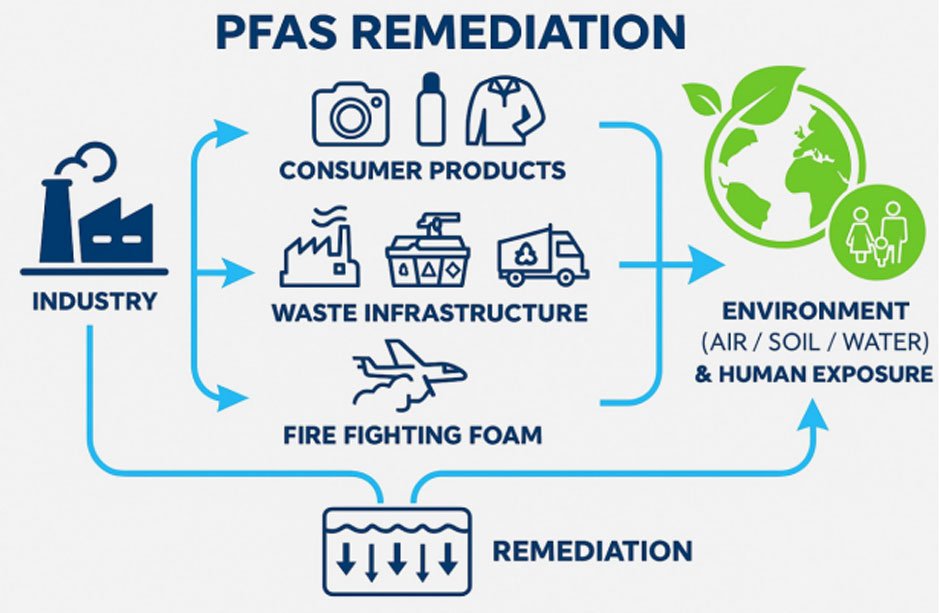
Scientists and engineers across the world continue to search for better ways to address contamination from per- and polyfluoroalkyl substances, or PFAS. These chemicals have raised concerns in recent years because they do not break down easily and can remain in soil and water for a long time.
New strategies for removing PFAS are gaining attention as researchers focus on safer water and cleaner environments. As government standards become stricter, interest in practical and effective solutions continues to grow among communities and industry experts alike.
Advanced plasma-based PFAS destruction
Plasma-based technologies use strong electrical energy to generate reactive species that attack PFAS molecules directly. These methods break the strong carbon-fluorine bonds found in PFAS, which are often hard to remove with standard treatments.
Researchers have tested plasma reactors in field settings and reported destruction rates ranging from 70% to 99%. This makes plasma an appealing option for reducing PFAS levels, especially compared to older approaches that only separate or concentrate pollutants.
A low-impact PFAS solution like this may cut down on transportation and disposal costs, as these systems can treat waste at the source. For additional information about practical PFAS removal or remediation, visit solutions for PFAS.
However, plasma systems still face challenges. Further improvements are needed to scale these technologies and make them more accessible for widespread use. Despite these hurdles, plasma-based PFAS destruction remains one of the leading novel technologies in the field.
Electrochemical reduction using hydrated electrons
Electrochemical reduction offers a promising method to target PFAS in contaminated environments. In this process, electrodes produce hydrated electrons that break the strong carbon-fluorine bonds in PFAS molecules. These bonds usually make PFAS very hard to remove, but hydrated electrons are among the few agents that can attack them directly.
Researchers have found that these electrons can convert PFAS into less harmful substances by splitting off fluoride atoms. This transformation helps lower the toxicity and persistence of PFAS in water and soil.
Advanced reduction processes can use ultraviolet light or special chemicals to increase the yield of hydrated electrons. However, some systems require careful control of conditions, such as pH or oxygen levels, to work effectively.
Studies continue to explore which reaction setups and materials generate the most hydrated electrons. These experiments help identify ways to destroy PFAS with greater efficiency and fewer unwanted byproducts.
Ex-situ treatment with granular activated carbon (GAC) adsorption
Ex-situ treatment with granular activated carbon, or GAC, is one of the most recognized methods for removing PFAS from water. This process typically involves extracting contaminated water from its source and passing it through tanks filled with GAC. The carbon granules trap PFAS chemicals and other organic particles, which leads to cleaner water as it exits the system.
GAC’s porous structure provides a large surface area, which helps it capture a wide range of contaminants. Many experts find GAC effective for PFAS with longer carbon chains, although results can vary with shorter chain types.
Regular maintenance or replacement of the GAC material remains necessary since its adsorption capacity decreases as it fills up with PFAS and other substances. Researchers continue to study methods to regenerate or replace spent GAC efficiently. Therefore, GAC adsorption stands out as a practical option for ex-situ PFAS water treatment, especially where removal to low levels is required.
Microbial bioremediation employing specialized bacteria
Microbial bioremediation uses certain bacteria to target specific pollutants in the environment. Scientists have identified native bacteria at contaminated sites that can break down various toxic chemicals, including some types of PFAS. These bacteria use their natural metabolic processes to either degrade or transform harmful substances into less dangerous forms.
Research often focuses on isolating and testing strains of bacteria that show potential to handle tough contaminants. Some strategies involve introducing these specialized bacteria into polluted soils or water, hoping they will outperform natural microbial communities at breaking down PFAS.
Another approach relies on helping the native bacterial populations already present. By providing specific nutrients or changing local conditions, experts aim to boost their ability to tackle contaminants. Despite these advances, microbial methods face challenges because PFAS chemicals resist breakdown more than many other pollutants.
Scientists continue to search for bacterial strains or combinations that show the strongest results against PFAS. Still, microbial bioremediation appears promising as part of a larger strategy for PFAS cleanup.
Integrated detection-remediation multifunctional platforms
Integrated detection-remediation platforms combine monitoring and clean-up methods into a single system. These tools allow real-time identification of PFAS and direct treatment without moving soil or water to another location.
Researchers use a range of sensors and adsorbents that find and capture PFAS in one step. AI and machine learning can play a role by processing large data sets collected by these sensors to guide the process.
These platforms can use advanced materials, such as plant-derived nano-frameworks, that both sense and trap PFAS molecules. In some designs, the same material destroys or breaks down the captured PFAS after detection.
This approach saves time and resources because it links detection with immediate action. It also reduces the risk of missing contamination or causing secondary pollution during sample transport.
Conclusion
PFAS remediation continues to develop, with several approaches now moving from laboratories to real-world tests. Thermal, chemical, and physical treatment methods each offer specific benefits, but results often depend on site conditions and the type of PFAS present. Bioremediation remains early in its research, so it does not yet offer broad solutions.
New integrated systems that combine detection and removal have started to show potential, although challenges remain, such as hazardous by-products and cost concerns. As new data and technology emerge, researchers and engineers must weigh both effectiveness and safety in their next steps toward safer water and cleaner soil.
